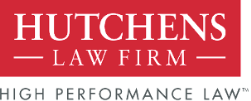In my previous blog, I cautioned about visiting the courthouse prior to hiring an attorney. This is because there are simplified estate administration procedures available in order to avoid what I refer to as “full probate.”
In this blog, I am going to briefly speak about two procedures available for surviving spouses rather than undertaking complete full estate administration.
Current law provides that a surviving spouse is entitled to an assignment of a Year’s Allowance in the amount of $30,000. The year’s allowance may be satisfied out of the decedent’s personal property. This does not include on cash, but also includes interests in vehicles, stocks, and household furnishings, to name a few options. In order to apply for a year’s allowance, the surviving spouse must request that the personal representative of the decedent’s estate apply for the allowance. If the personal representative fails to do so within ten (10) days, then the surviving spouse can file directly with the Clerk of Court. The application must be made within one year of the Decedent’s date of death or otherwise it is untimely. The year’s allowance is paid before any creditors are paid, as it is exempt from creditors’ claims. This is helpful with small estates or with estates where the decedent held mostly joint property with his or her spouse, with rights of survivorship.
Additionally, if there is insufficient personal property to satisfy the year’s allowance at the time the application is made, the Court will assign a deficiency and, if additional personal property is discovered, will as such property to the spouse.
A second alternative to full probate upon the death of a spouse is for the surviving spouse to file an Application for Probate and Petition for Summary Administration. This proceeding is available when the surviving spouse is the sole beneficiary of the decedent’s estate, either by will or intestacy (law that applies when someone dies without a will). In the application, the surviving spouse agrees that he or she will assume obligation for any debts of the decedent. As such, this is not a useful method where the decedent had large amounts of individual debt. The application sets forth the assets of the decedent as of his or her date of death, including jointly held assets. The asset valuation must be verified by documentation including signature cards for deposit accounts, valuations for vehicles (Edmunds Financial or Kelley Bluebook is sufficient), date of death valuation of stocks and other supporting information depending upon the nature of the assets.
Both the year’s allowance and summary administration include the possibility of having “one and done” filing. What I mean by that is, if the year’s allowance is assigned, a deficiency is assigned or the allowance is satisfied, and no property ever becomes available to satisfy the deficiency, there will only be one filing with the Clerk of Court. Likewise, upon audit of an Application for Probate and Petition for Summary Administration, the Court enters an Order of Summary Administration and no further action is required with regard to the Court. This is attractive to many clients who are trying to avoid “full probate,” which generally takes at least 120 days but may take longer than a year.
Published by Hutchens Law Firm on July 8, 2016
